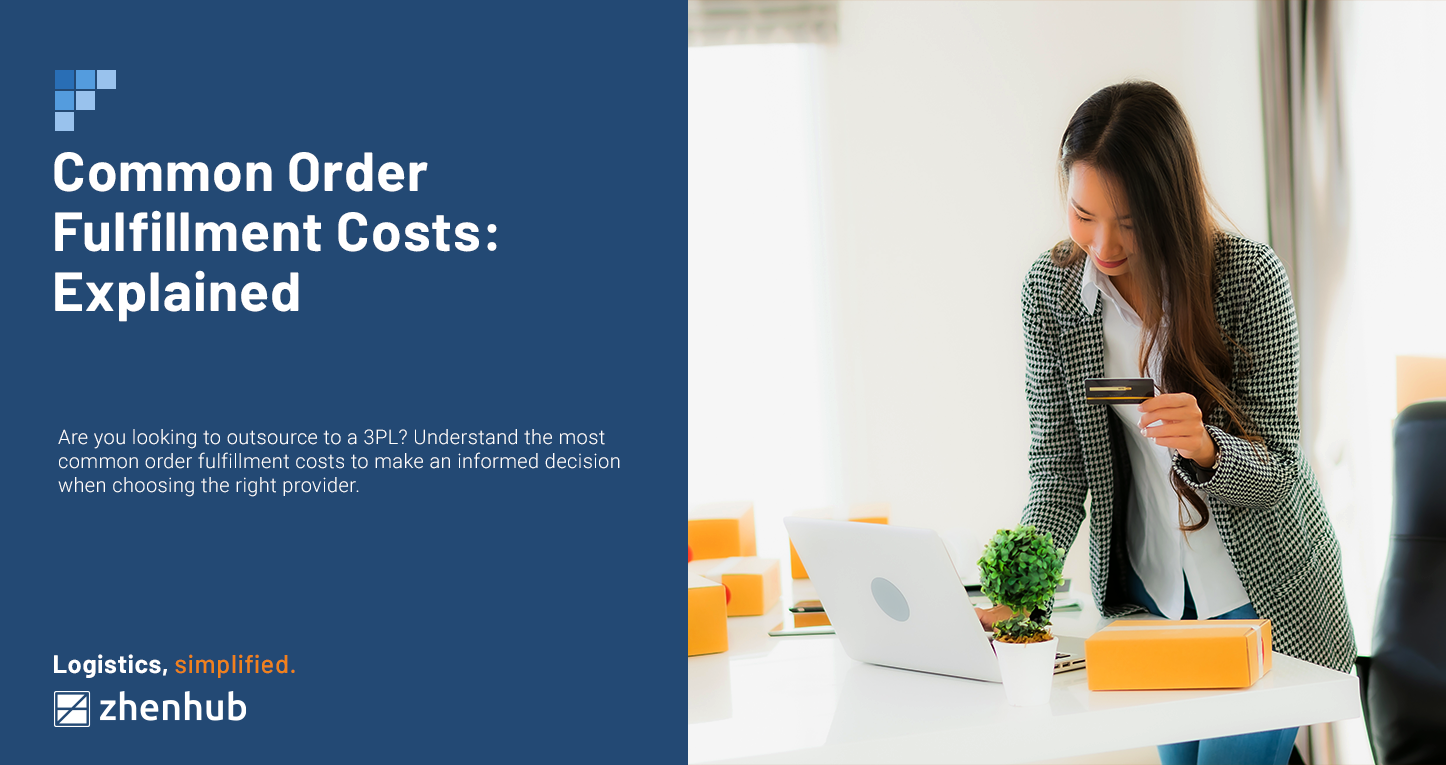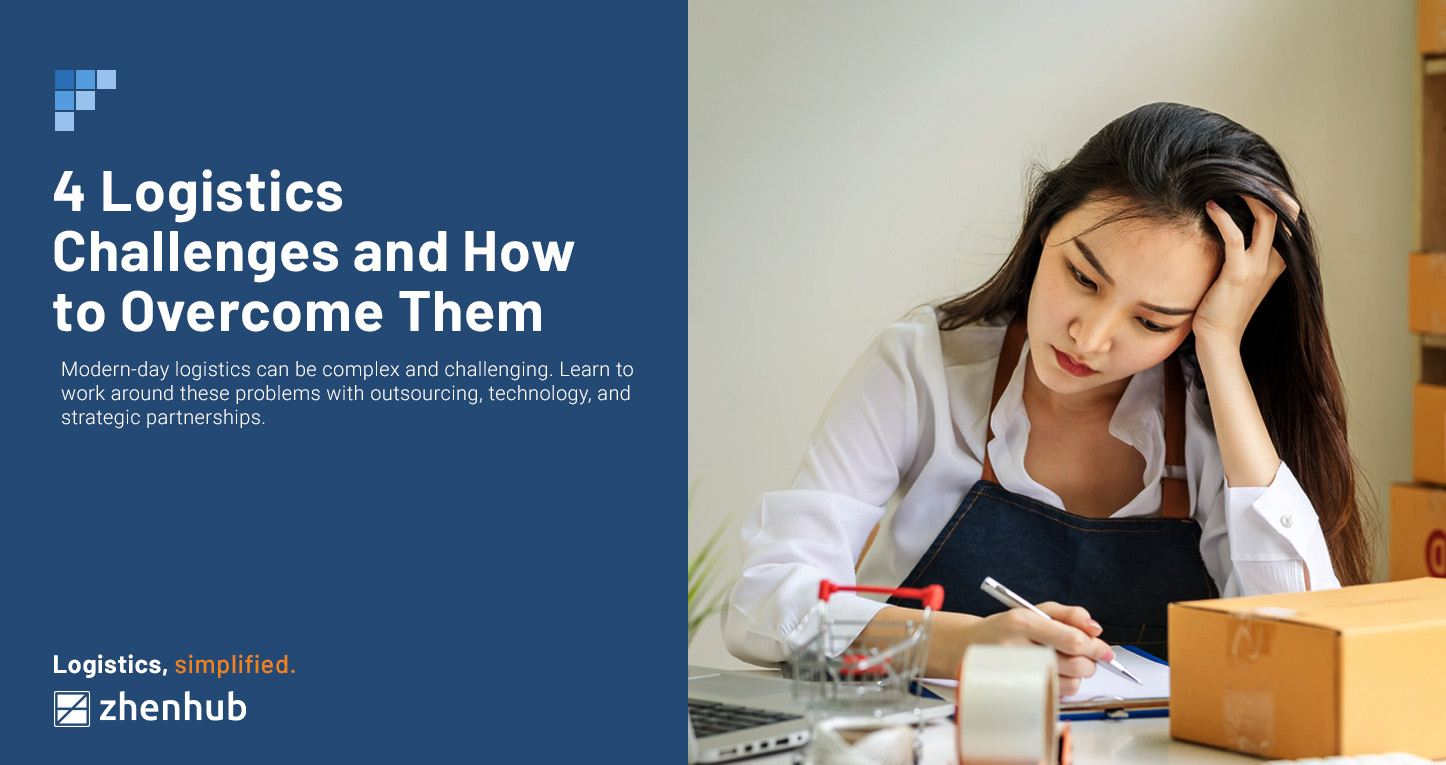
Common Order Fulfillment Costs: Explained
Time to read: 4 minutes
At the core of online shopping is convenience. Today consumers are more demanding, and they expect their online shopping experience to be seamless and swift. These expectations were even more evident in 2020. People shifted to online shopping not only because of convenience but for safety as well. In the US alone, e-commerce sales amounted to $792 billion in 2020, more than 14% of the total retail sales.
It is no longer enough to stock good quality products. To get ahead of the pack, retailers must have the best inventory and develop an efficient supply chain process. It should include maintaining reasonable order fulfillment costs to create an adequate customer service flow.
Tackling the entire supply chain is a complex undertaking. If you want to know more about order fulfillment costs and how important it is in the supply chain, read on.
In-House versus Outsourced Order Fulfillment
One of the most important decisions a retailer has to make is whether to keep the order fulfillment process in-house or outsource it. The choice between the two methods influences total order fulfillment costs.
Deciding between in-house and outsourced order fulfillment depends on several factors:
- Financial Capability
Especially for newly established eCommerce operations, outsourcing order fulfillment seems to be an expensive endeavor. For one-person operations, it is easy to assume that packing orders and tackling inventory without the need to pay a team works better for the bottom line. Interestingly, this isn’t necessarily the truth, as some entrepreneurs found outsourcing allowed them to scale and process more business. There is more to order fulfillment costs than packing materials and labor.
For instance, warehousing options can be costly depending on an operation’s location. On average, it costs $.85 per square foot per month to rent a 1,000 square foot warehouse. This figure doesn’t include overhead costs and employee salaries.
- Inventory Variety
Unique products call for unique packaging solutions. Not all 3PL companies can provide services that accommodate inventory that require out-of-scope functions. Logistics providers nowadays can handle various products – from frozen goods to corrosive chemicals. It’s all a matter of evaluating their offering for retailers and finding the right 3PL to partner with.
- Management & Control
Most retailers choose to keep their order fulfillment in-house not only to save on costs but to maintain total control over the operation. To be fair, there is some merit to maintaining complete control. However, order fulfillment can be an all-consuming endeavor. Controlling every single aspect of the supply chain can prevent retailers from focusing on growing and scaling their company through new products and services.
Four Most Common Types of Outsourced Order Fulfillment Costs
Different 3PL providers charge various fees for their services. However, regardless of their pricing matrix, the prices below are the most common order fulfillment costs that retailers may encounter:
- Initial Set-Up
Most 3PL costs include an onboarding fee. The amount may vary from provider to provider. On average, a retailer can expect to spend anywhere from $336 to $520 on set-up alone. Nevertheless, the costs are usually proportional to what an online operation is getting.
Most of the fee goes to connecting an online eCommerce platform with the 3PL’s warehouse management system. An IT professional is required for this process. As a general rule of thumb – the more sophisticated the platform integrations, the more expensive the initial set-up fee is.
- Receiving Fees
Aside from the fulfillment system set-up, logistics providers need to receive inventory before storing and shipping orders. Not all companies charge for receiving products. For some, receiving costs are already factored into the overall package price.
There are a few providers that require their customers to pay for intake fees. Again, the cost of the intake fee depends on the 3PL company. Fulfillment companies charge for receiving fees either by the hour or per unit of shipment. On average, intake fees cost $35-$45 per hour. The receiving step encompasses several tasks, including unloading the cargo, counting and cataloging inventory, and storing pallets. Additional fees for barcode scanning and damage inspection may also apply.
- Storage Fees
One of the biggest draws of utilizing a professional logistics company is the inclusion of warehousing services. Unsurprisingly, a large part of the order fulfillment costs goes to storing inventory. Most 3PL companies charge based on the amount of space a pallet of products occupies in a warehouse. Renting space in a warehouse may cost anywhere from $8 to $40 per month. The wide range considers several factors, including warehouse location, pallet volume, and special conditions such as climate control.
Storage fees vary from month to month depending on the inventory scale that the retailer needs to fulfill orders. While this caveat makes accounting for storage fees challenging, online stores only pay for the space that they use.
- Pick & Pack Pricing
Not all 3PL offer a pick & pack service. Those that do, however, manage the sorting and packing of multiple items within an order. Once a customer orders from a company, companies that offer pick & pack are responsible for retrieving objects from their warehouse location and packing them in a single order. More often than not, 3PLs charge per-pick, and it means that retailers pay for every item packed within an order.
- Packaging Costs
Packaging is an essential part of maintaining brand identity. For most customers, the packaging determines their first impression of an online store—the better the packing, the better impression they may have. A poorly handled package may be due to substandard quality, so it’s essential to ensure the 3PL guarantees to take care of this.
3PL providers often include standard packing materials such as bubble wraps and plain envelopes for free as part of their packaging costs. All you need to pay for is the actual packing service. Additional charges, of course, are expected for custom branded packaging options.
- Shipping Costs
Whether a retailer chooses to work with a 3PL or do their order fulfillment in-house, shipping costs often are the source of headaches. Various locations call for different payments. For new eCommerce operations, it is even more challenging to keep up.
Logistics providers ship in bulk which allows them to enjoy discounts from carriers. Unless a merchant is catering to a single target destination, outsourcing to a 3PL can significantly help in minimizing eCommerce shipping costs, which, when done in-house, can blow up the order fulfillment costs.
Key Takeaways
Fifty-three (53%) of online consumers deem delivery speed essential in their purchase decision-making process. In fact, of the 53%, 24% have canceled their orders because they didn’t arrive fast enough.
Without a doubt, the success of your company depends mainly on order fulfillment. Deciding to weigh out order fulfillment costs and opt for the help of a 3PL provider can be the key to your success. ZhenHub’s technology-based solutions can optimize the business and operational processes to keep your customers satisfied and grow your client base. Sign up with us today and take advantage of efficient, cost-effective, and hassle-free order fulfillment.


